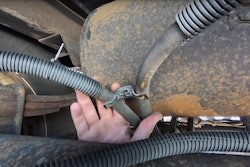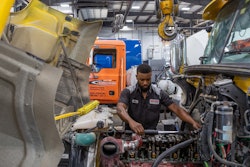Every fleet manager knows the importance of preventive maintenance (PM) for the health of its assets. By implementing a well-designed maintenance program, fleets can improve safety, reduce equipment downtime, increase productivity, and improve regulatory compliance. To achieve this goal the program needs to include regular inspections and maintenance checks on critical components such as tires, engine, aftertreatment, transmission, braking, hydraulic, tanks, and cooling systems.
A good PM program begins by following the manufacturer's recommended maintenance schedule. Work with your OEM’s and discuss the recommended service intervals on your equipment. In addition, stay current on any recalls or safety bulletins to ensure your equipment remains
Regular inspections of equipment should include identifying and addressing wear and tear; finding loose and missing parts; looking for and signs of corrosion — which if caught can reduce the risk of more extensive and costly repairs.
Your oil drain intervals will change based on your application. And if your fleet is running higher MPGs, there is a direct correlation to extended oil drain intervals. OEMs will also inform you of any changes in aftertreatment mileage changes, or even maintenance interval tracking through onboard diagnostics.
Tractor maintenance
Failure to perform regular oil changes can result in excessive wear on engine components, leading to premature engine failure. Use oil analysis to adjust your drains based on your application. Dirty air filters can reduce engine performance, causing reduced fuel efficiency and increased emissions.
Trailer maintenance
Failure to replace worn or damaged trailer brake components can cause increased stopping distances that increase the likelihood of accidents. Trailer payload will determine the wear and tear on tires and suspension components — the heavier the load the more likely it is that your tires and suspension will wear at a higher rate.
Dump truck maintenance
Failure to regularly inspect and maintain hydraulic systems will lead to costly roadside repairs and decreased efficiency. Worn or damaged suspension components can cause increased vehicle sway, reducing stability and potentially cause an accident.
Concrete mixer maintenance
Failure to regularly inspect and maintain the mixing drum can cause concrete buildup, leading to decreased mixing efficiency and potential equipment failure. Worn or damaged hydraulic pumps can leak and decrease efficiency, leading to increased fuel consumption.
Tanker maintenance
Failure to replace worn or damaged valves can cause leaks, leading to potential accidents and environmental damage. Dirty or contaminated tanks can cause corrosion, leading to costly repairs and potential equipment failure.
Failing to perform regular maintenance on any Class 8 vehicle can lead to decreased performance, increased fuel consumption, higher emissions, and costly repairs. It can also increase the risk of accidents and potentially harm drivers and other road users.
Regular preventive maintenance is critical to ensuring the optimal performance and longevity of the equipment. Proper maintenance of critical components such as the engine, transmission, braking system, cooling system, and tires reduces the risk of unexpected downtime and costly repairs.
Regular inspections allow the fleet to address potential problems early to ensure that their equipment remains safe and up-to-date, which extends its lifecycle. The benefits of preventive maintenance go beyond just saving money on repair components of a well-designed maintenance program.














